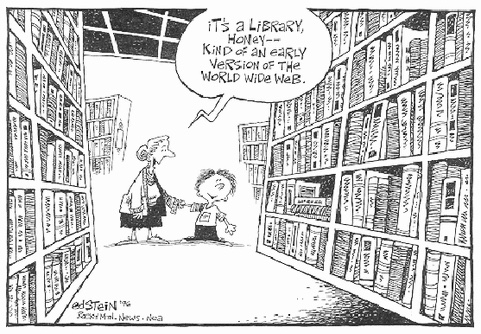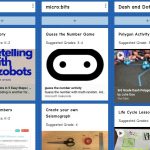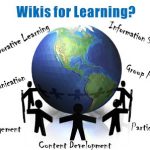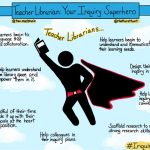Our libraries are changing. Gone are the quiet rooms and stern, shushing librarians. The library – or perhaps more aptly named, Library Learning Commons – has become a dynamic place of collaboration and a hive of activity. Librarians are no longer expected to enforce silence but must assist students as they research, create, collaborate and construct. Stacks of books, while still in use, are combined with computers, tablets, coding robots, and construction materials. Students are able to interact with one another and learn in a self-directed way.
The transition from traditional library to Library Learning Common has been happening for the last couple of years in Newfoundland and Labrador. The government rolled out a three phase plan in order to provide extra support and funding to every school library within the province to assist in this transition. The Department of Education and Early Childhood Development released a document entitled “Extending the Classroom” which outlines the steps needed, as well as the philosophy behind, Library Learning Commons. https://www.gov.nl.ca/eecd/files/pdf_extending_the_classroom-the_library_learning_commons_june_15_2018.pdf
I have seen first-hand, the first steps of this transition in several schools and it is both exciting and fascinating. Observing these changes have led me to wonder about the ways in which we learn and the changing roles of the teacher librarian in the process of learning. In Achieving Information Literacy, it states that “under the leadership of a teacher-librarian, working in collaboration with classroom teachers, students develop and practice the information literacy skills and habits of lifelong learning” (Achieving Information Literacy 6).
A culture of inquiry and curisotiy is essential to developing the practice of lifelong learning. Teacher librarians are now charged with the task of fostering this drive in their students. This is no small feat. The introduction of multi-media as well as the digitization of the library have helped to increase student engagement making students intrinsically motivated to learn and grow. Students now collaborate and use a variety of resources and technologies thereby developing their information literacy, their digital literacy, as well as essential critical thinking skills.
In further pursuing the transition of libraries to Library Learning Commons, especially as it pertains to lifelong learning, I hope to further investigate key terminology such as:
- self-directed learning
- inquiry-based learning
- personal learning networks
- learning communities
- problem-solving
- critical-thinking
- digital literacy
- information literacy, and
- culture of learning
Asselin, M., Branch, J., & Oberg, D., (Eds). Achieving information literacy: Standards for school library programs in Canada. Ottawa, ON: Canadian School Library Association & The Association for Teacher-Librarianship in Canada.


 Follow
Follow






Darcy
January 18, 2020 — 12:59 pm
This is a well written and thoughtful post. You are exploring important ideas and themes here. I appreciated the hyperlink to “Extending the Classroom.” It would be interesting to compare it to “Leading Learning.” Looking forward to seeing where your further reading and research take you.